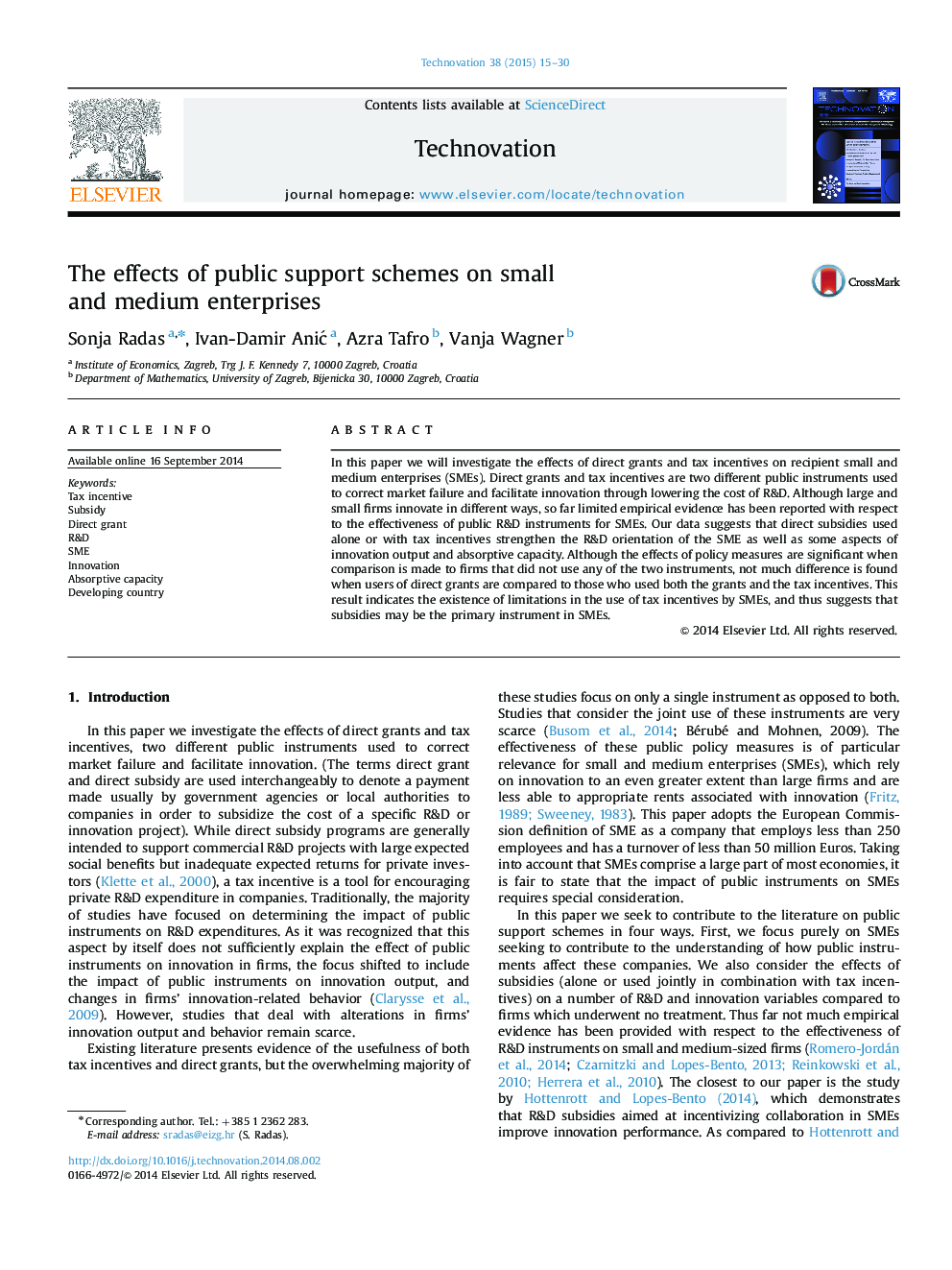| Article ID | Journal | Published Year | Pages | File Type |
|---|---|---|---|---|
| 1021847 | Technovation | 2015 | 16 Pages |
•Public instruments strengthen the R&D orientation of the SME as well as the innovation output.•Public instruments improve absorptive capacity, but do not impact all its aspects equally.•Increase in absorptive capacity may enable SMEs to permanently move onto a higher level of innovation ability.•Data suggests that subsidies may be the primary stimulating policy instrument for SMEs.
In this paper we will investigate the effects of direct grants and tax incentives on recipient small and medium enterprises (SMEs). Direct grants and tax incentives are two different public instruments used to correct market failure and facilitate innovation through lowering the cost of R&D. Although large and small firms innovate in different ways, so far limited empirical evidence has been reported with respect to the effectiveness of public R&D instruments for SMEs. Our data suggests that direct subsidies used alone or with tax incentives strengthen the R&D orientation of the SME as well as some aspects of innovation output and absorptive capacity. Although the effects of policy measures are significant when comparison is made to firms that did not use any of the two instruments, not much difference is found when users of direct grants are compared to those who used both the grants and the tax incentives. This result indicates the existence of limitations in the use of tax incentives by SMEs, and thus suggests that subsidies may be the primary instrument in SMEs.
